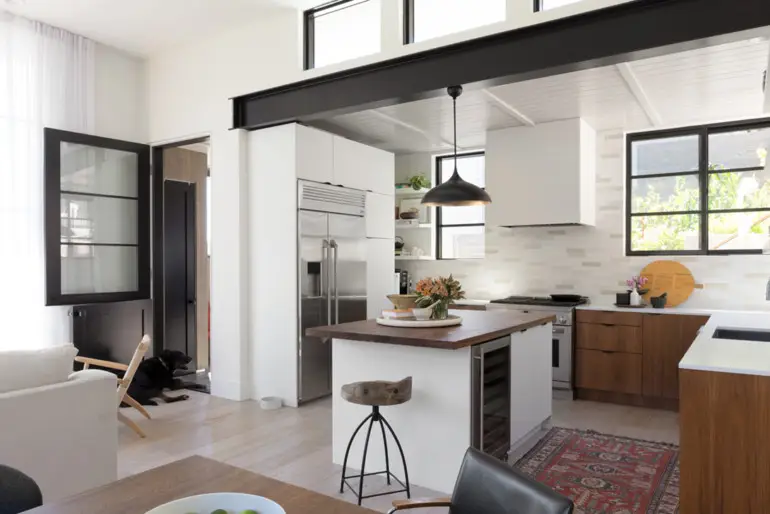In Mill Valley, architect Chris Dorman revives old ideas to fit contemporary molds.
“I AM A HORRIBLE STORYTELLER,” architect Chris Dorman confesses.
Perhaps that’s why we don’t often hear of the work he has been quietly doing for nearly three decades, out of an office in San Rafael and now in Mill Valley: residential and commercial projects in the North Bay, such as Ged Robertson’s brand-new Watershed restaurant; projects in the wine country and in Mexico, where he created the lauded organic farm-to-table resort enterprise called Flora Farms.
But closer to home, there is a story he tells eloquently. It is the story of his stucco and cedar-clad home in Tamalpais Valley.
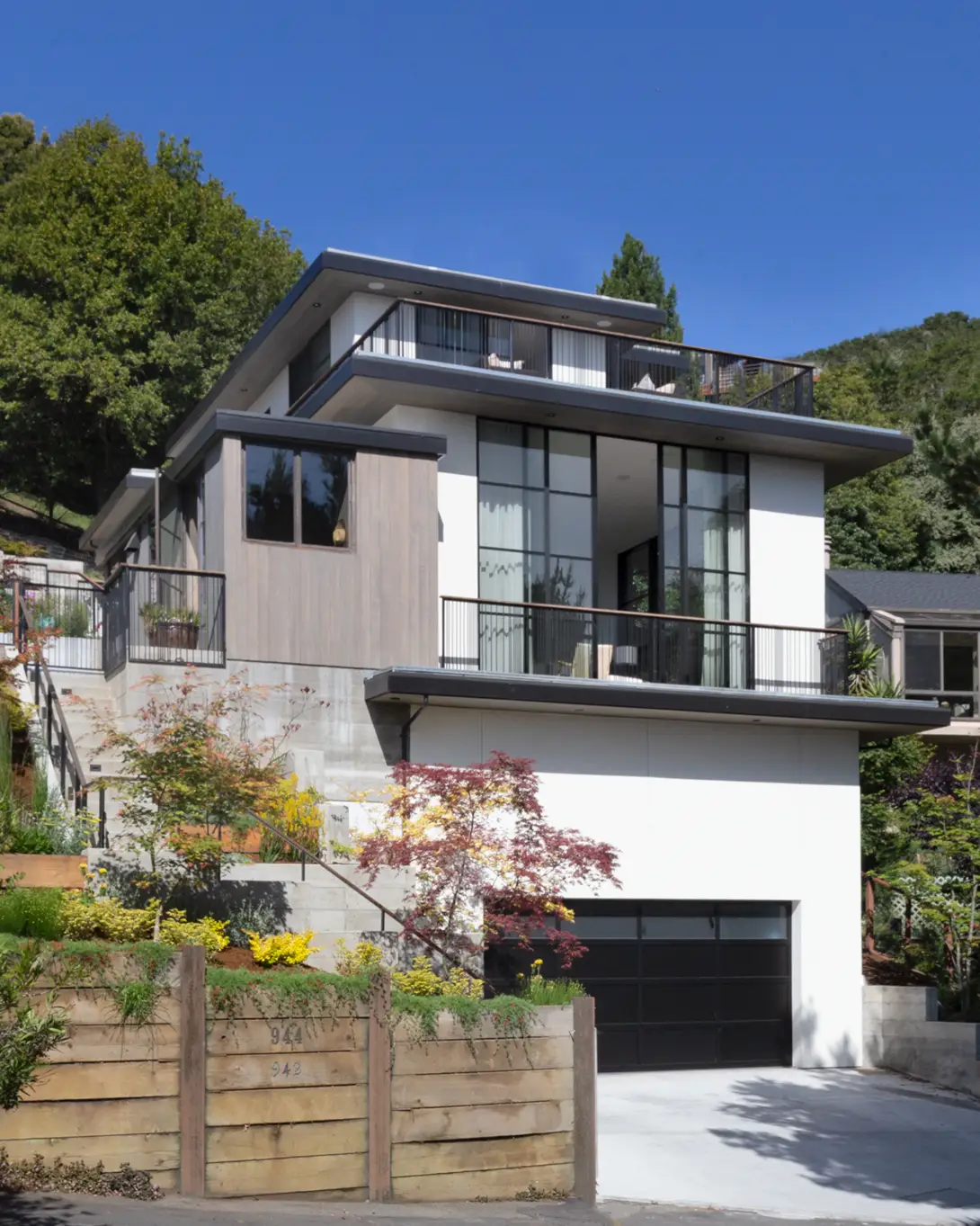
The steep, up-sloping lot he purchased from a friend, 5,500 square feet and barely buildable, came with a 1989 zoning caveat that only allowed a 1,650-square-foot home on it. So that’s what he built.
“That’s the short version,” he says with a nervous laugh. But there is more to tell.
Evidently, when he bought the land in 2016, it was after six years of trying to help his friend build an investment property on it. They kept running aground because “developers want an easier project,” he says. “This lot was too steep, and it had a big dying oak tree struggling in the middle of it.”
They briefly considered a building made of stacked containers or some other cost-effective solution for the site, but gave up. However, once Dorman owned the land and had some experience on it in his spare time, inspiration struck: it was odd enough and nice enough for a home of his own.
The lot was 50 feet wide and, even though the rules required a setback of six feet on each side away from the property line, he thought he could build a multistory house that stepped up the hill. It could incorporate the outdoors at each level, so that even the setback areas would be part of relatively generous board-formed concrete side terraces. The terraces would be expensive, but would double as retaining walls.
“For me the most important thing was the flow,” Dorman says. Although a large courtyard was not doable, “if you can flow outdoors easily at each level, even a 1,650-square-foot house can seem so much larger.”
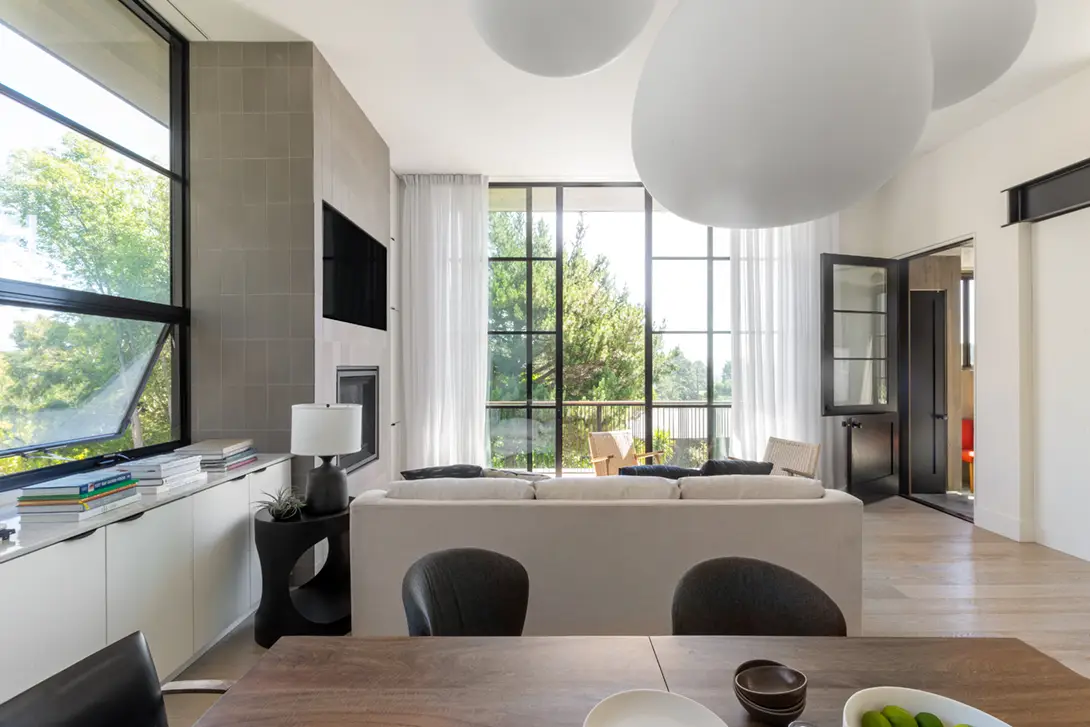
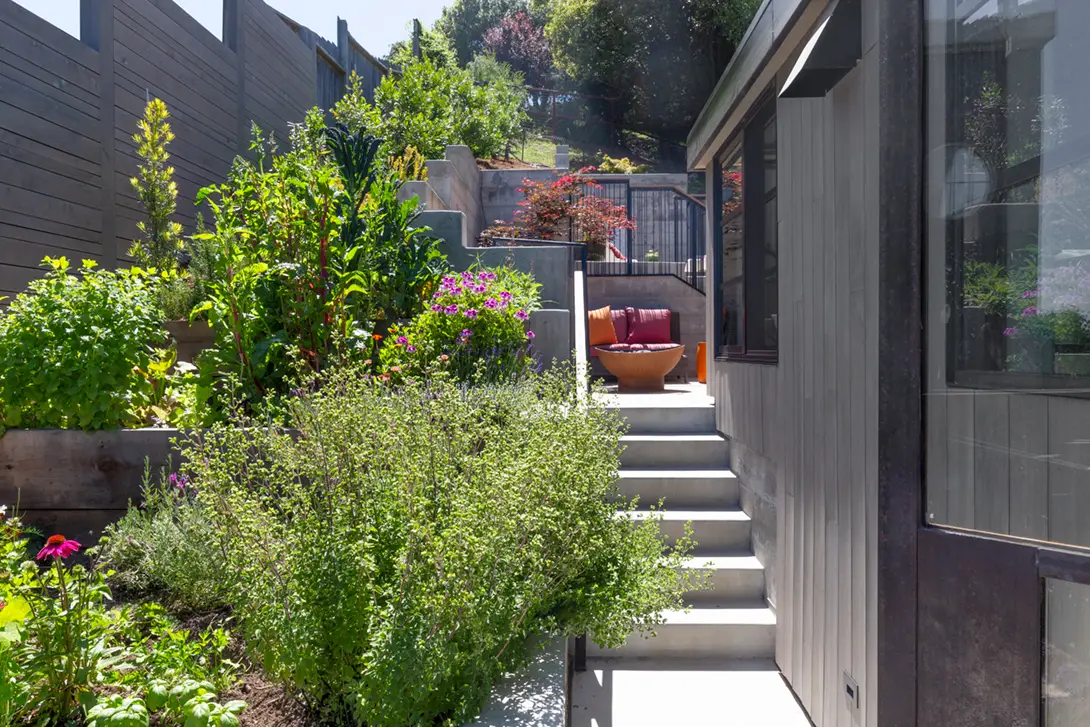
His wife, Antonette Greene, and their two young boys, Harper and Calder, approved, and work began.
The crisp, white-walled, wide-plank oak-floored house, completed about a year ago, essentially has four levels, with rooms on successively higher levels, linked either by doors or large windows to stepped south-facing courtyards, planned in collaboration with landscape architect Michael Erskine. “Visual links between spaces are important. Any space you don’t see doesn’t get used,” Dorman says.
Inside, to simulate the urban loft look that he admires, a stepped “hallway” links the different levels. Half a flight up from the main floor is one boy’s room; another half-flight up are another bedroom and a guest nook that doubles as an appealing work-in-bed office. Switching back, a full flight up, is the master suite, which opens to a rooftop view deck. “It all fits together like a puzzle,” Dorman says.
With the changing floor and ceiling heights, “there is also a sense of visual release,” he adds. “I have a low nine-foot entry and the Heath-tiled kitchen area is lower, because that’s where you hunker down to cook, but then the main loft- like living space is really high.” Its 12-foot-high, east-facing, floor-to-ceiling aluminum sliding glass doors open onto a narrow balcony and look out at trees that add to the sense of being outdoors.
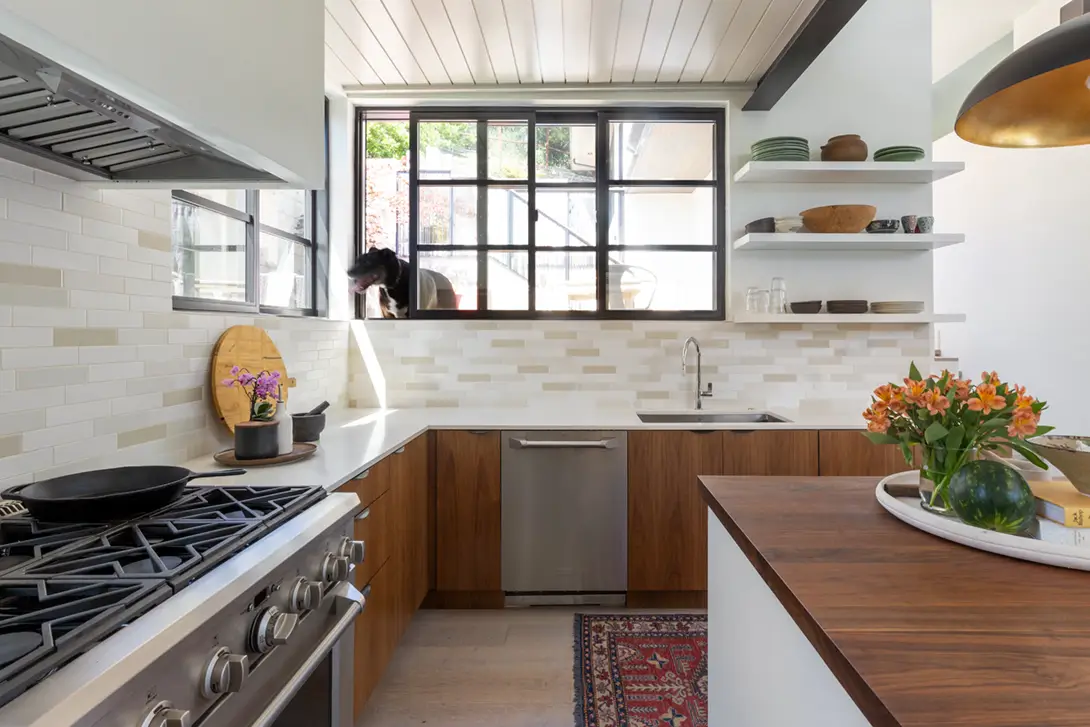
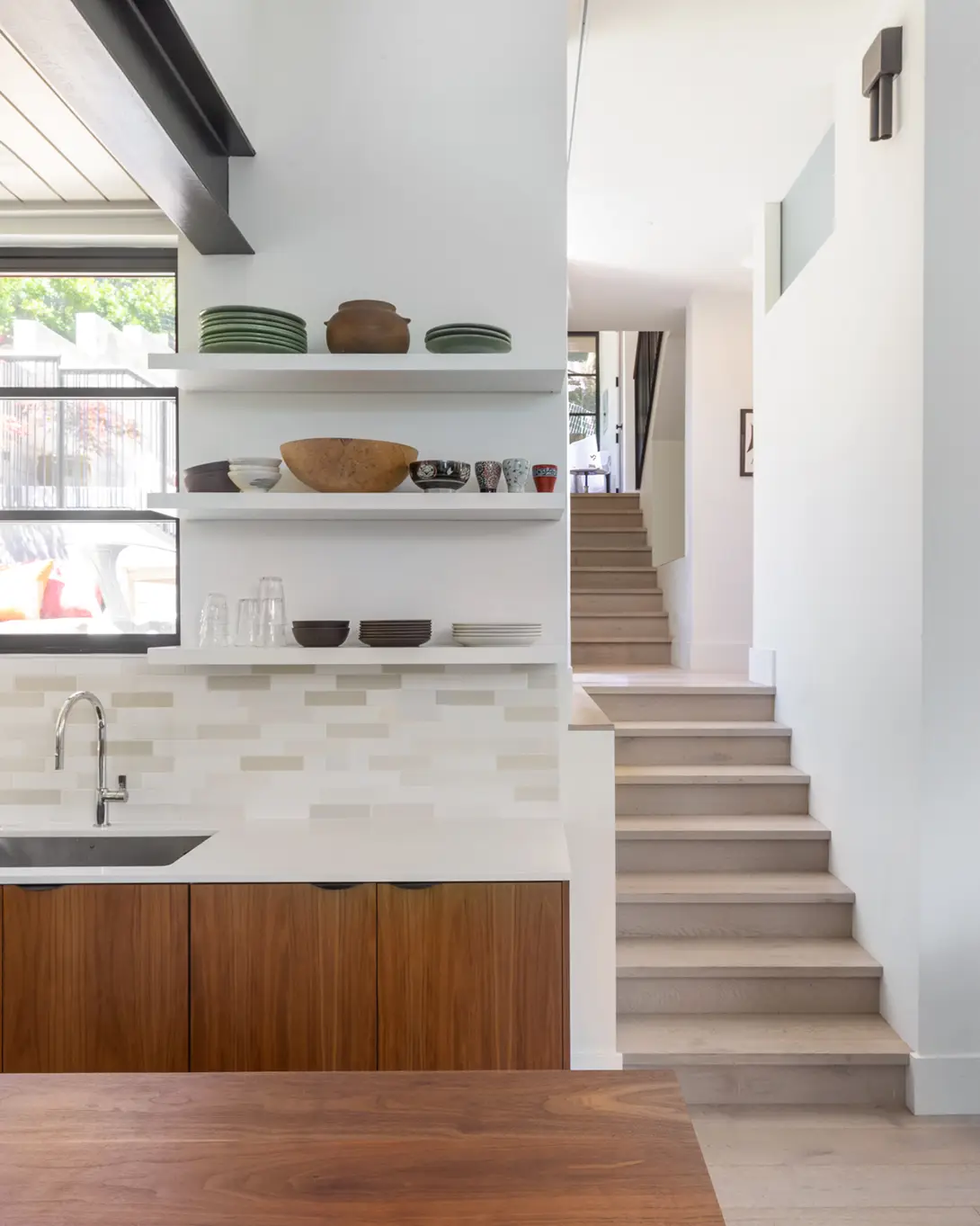
If these ideas seem to echo those of architects Adolf Loos and Frank Lloyd Wright, that’s not surprising, because by the time Dorman graduated from architecture school in 1996 he had taken design theory courses that delved into the roots of modern architecture and its earliest innovations. “How do we improve what has been done and how to grab from the past interested me,” he says. “You can always reuse core elements.”
Coincidentally, Dorman grew up in Sacramento on a pie-shaped lot that no developers wanted, so his parents built a redwood-clad Sea Ranch–style home, by Dorman’s mentor Brent Smith, that was unlike any of the 1970s look-alike tract homes surrounding them.
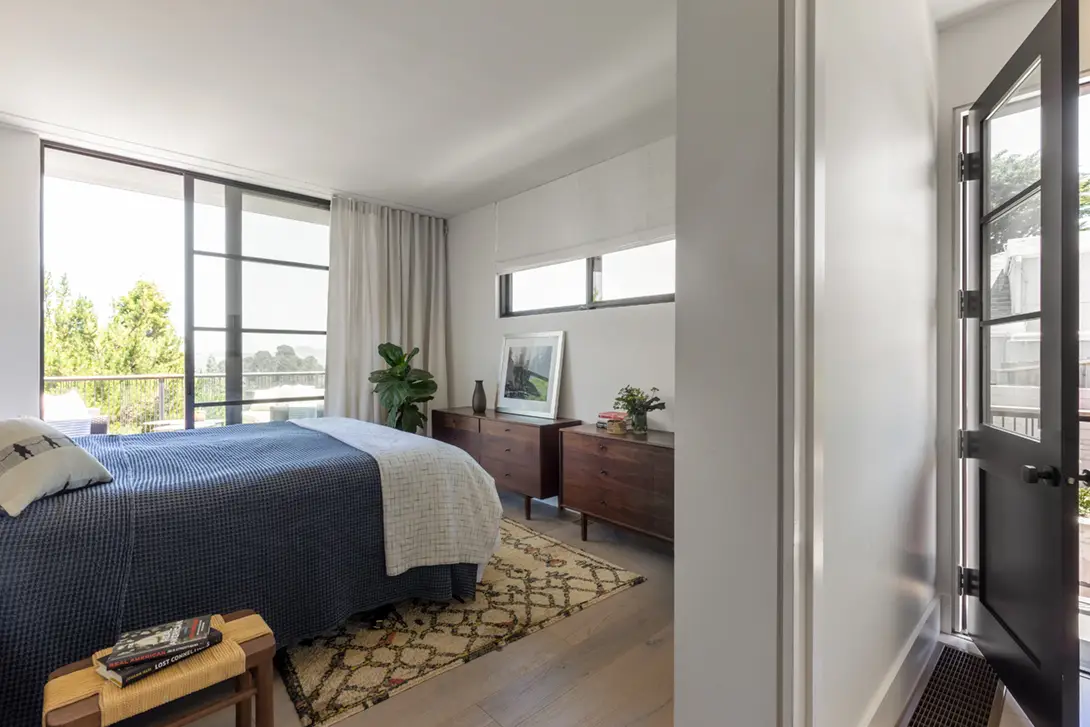
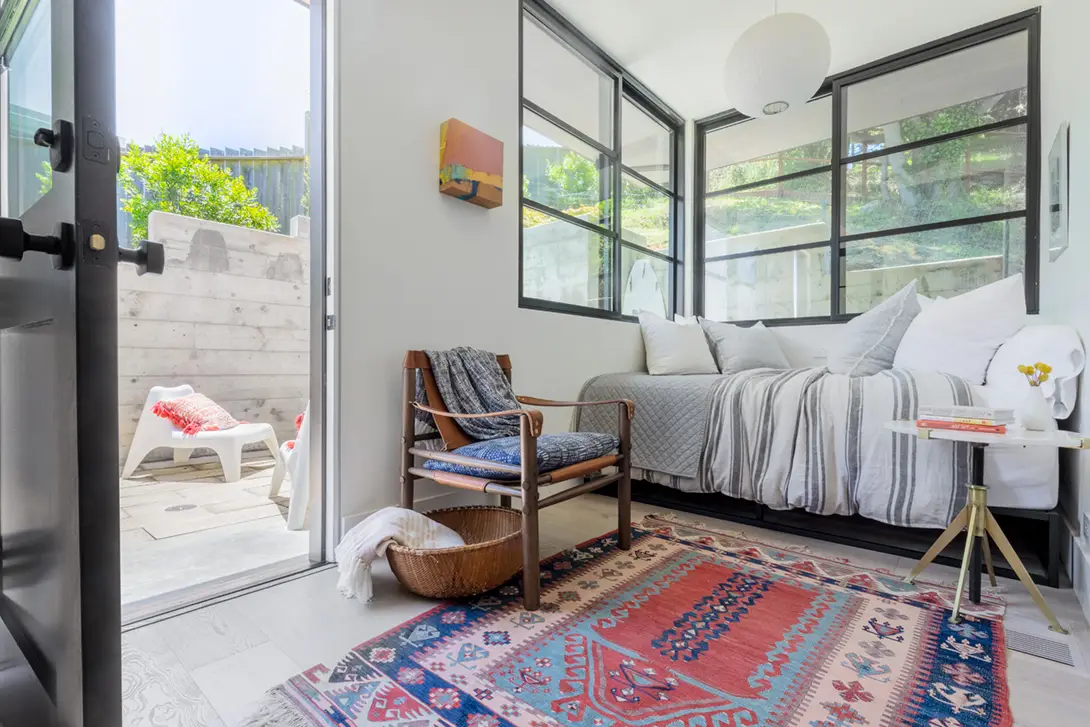
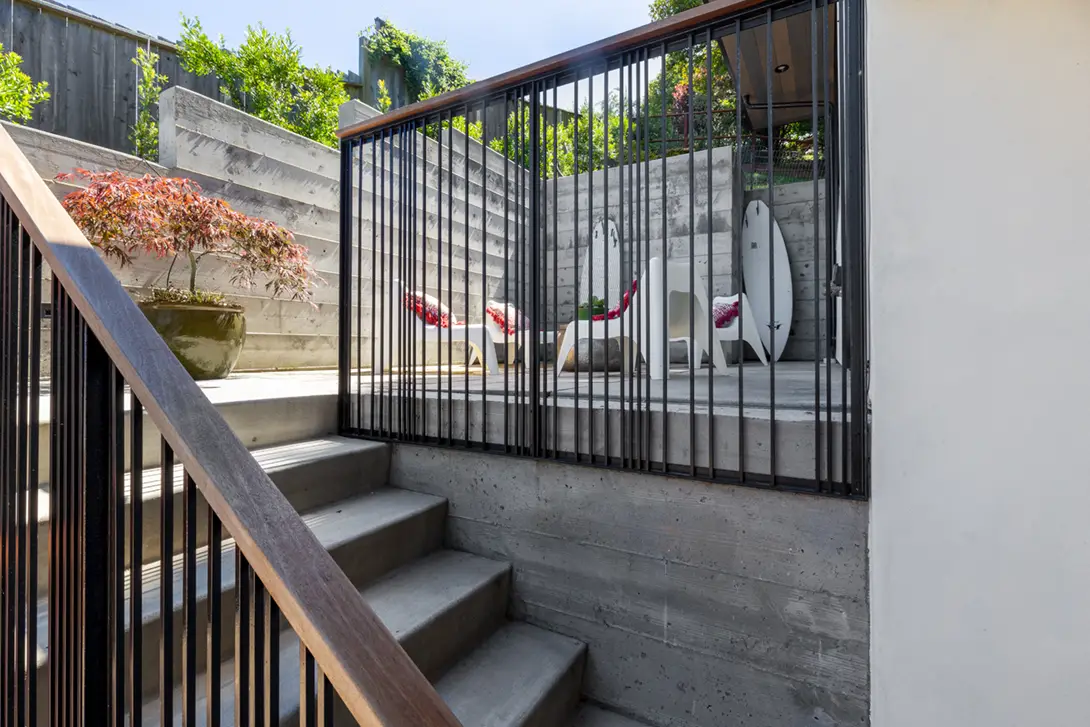
“It had 18-foot-high ceilings and rooms that opened to the outdoors,” he recalls. “When it cooled down in the evenings, sitting outside was always preferable.”
Like that house, his current home is relatively small, but Dorman is pleased that he could build in stratospherically expensive Mill Valley at all. The family had to downsize drastically, even with a storage space above the garage. But on the plus side, “we got rid of so much crap,” he adds with a laugh. The home is not exactly an argument for a smaller home or any kind of tiny house manifesto, he admits, because he is very tall and likes building big. Still, “this compact house is all that a new house in Mill Valley can be.”
This article originally appeared in SPACES’s print edition under the headline: “Past Present”.
KITCHEN
Light fixture, Aerin Visual Comfort; Calaque rope chair, calypso stool, Matafields cutting board, custom dining table, side Humphries dining chairs, all through Design Alchemy; cups, bowl, dishes, pot, all at Heath Ceramics
LIVING ROOM
Lee Industries couch, Tenesise pillows, vintage bicycle tire nesting tables, Calaque rope chair, all through Design Alchemy
BEDROOM
Orian bedding, Calaque side table, all through Design Alchemy
OFFICE/PATIO
Patio chairs, Ikea; Orian pillow, Lee Industries chair and cushion, L. Peters side table, Tenesise bed pillows, Centament bedding, Calgary blanket 2, Centament blanket 1, all through Design Alchemy
This article originally appeared in SPACES’s print edition under the headline: “Past Present”.

Editor-in-chief Zahid Sardar brings an extensive range of design interests and keen knowledge of Bay Area design culture to SPACES magazine. He is a San Francisco editor, curator and author specializing in global architecture, interiors, landscape and industrial design. His work has appeared in numerous design publications as well as the San Francisco Chronicle for which he served as an influential design editor for 22 years. Sardar serves on the San Francisco Decorator Showcase design advisory board.
